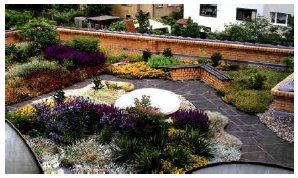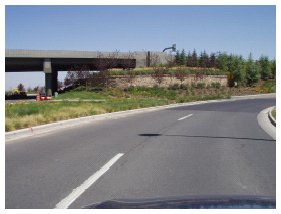Green Infrastructure - Promote Integration of Green Infrastructure in Urban Settings and Real Estate Development Projects


Recommendation Overview
Protect Critical Biodiversity Areas
Support Development of Trails and Greenway Network
Encourage Regional Watershed and Management Planning
Protect Our Dunes and Shoreline Promote Integration of Green Infrastructure in Urban Settings
Promote Regional Farmland Preservation
Local Implementation
Data Sharing
When thinking of green space we don't often consider urban centers and real estate developments, but these types of areas need to be given consideration. Green infrastructure in not just important for suburbs and the rural fringes of more urbanized areas, but also to urban cores. Developing the green infrastructure of urban areas brings many benefits, including improving the overall quality and attractiveness of neighborhoods; improving health; increasing property values; reducing heating and cooling costs; and even helping to stabilize city weather (particularly by reducing urban "heat sinks").
Green Roofing
There is an easy and largely forgotten place to restore green infrastructure in urban regions at a fraction of the cost of open space - rooftops. Traditional urban rooftops are black tar, and thus they absorb huge amounts of heat in the summer, contributing to the urban "heat islands" that have been demonstrated to measurably alter weather patterns around urban centers.
A green roof, by contrast, brings with it a host of benefits:
-Slowing down, reducing and cleansing storm-water runoff, thereby reducing stress on stormwater systems. Green roofs can absorb as much as 70% of the rainwater they receive. -Turning an unusable space into a pleasant amenity. -Providing urban habitat for plants, birds and other animals. -Reducing heat absorption and moderating temperature extremes, providing benefits both to the building and the surrounding environment. -Extending the life of the roof. With green roofing, we can replace some portion of the natural ecology that is destroyed by the placement of buildings, and at the same time add to our total green infrastructure asset base.
(Source: "Vegetation Systems Atop Buildings Yield Multiple Environmental Benefits" Architectural Record, March 2003)
For more information on green roofs, visit greenroofs.com
Urban "Rain Gardens"
Rain gardens are a special kind of stormwater garden designed to collect and absorb runoff from a roof or parking lot. They help to restore natural hydrology patterns by allowing rain to soak into the soil, be taken up and filtered by plants, and enter surface waters as clean, cool groundwater as opposed to stormwater, which currently accounts for as much as 70% of the regions water pollution.
The West Michigan Environmental Action Council has launched an initiative to promote rain garden development in the region. For more information you can visit their website at raingardens.org.
Gateways and Passages: Green Infrastructure for Travellers
A large part of the impression we get from an area is derived from our view of it from the automobile or other transport as we drive through. The attractiveness of an area is largely dependent on what visitors and residents see as they travel around the region.
By adopting different highway designs (for example, tree canopy that covers the road and wooded buffer areas between the highway and residential areas) we could drive through heavily populated areas and still get the impression that we were traveling through a state or national forest. Roadways could actually contribute to the natural beauty of an area, instead of detracting from it.
Recommendations:
- Ensure that green space is publicly available in city centers and park access is readily available in each neighborhood.
- Ensure that regional trails systems include branches that extend into city centers.
- Support incentives for the integration of green infrastructure into urban areas, and in real estate development projects.
- Develop our public buildings in Grand Rapids, Holland and Muskegon as examples of "best practice" in urban green infrastructure.
- Support initiatives to preserve green infrastructure along our important gateways and passages.
